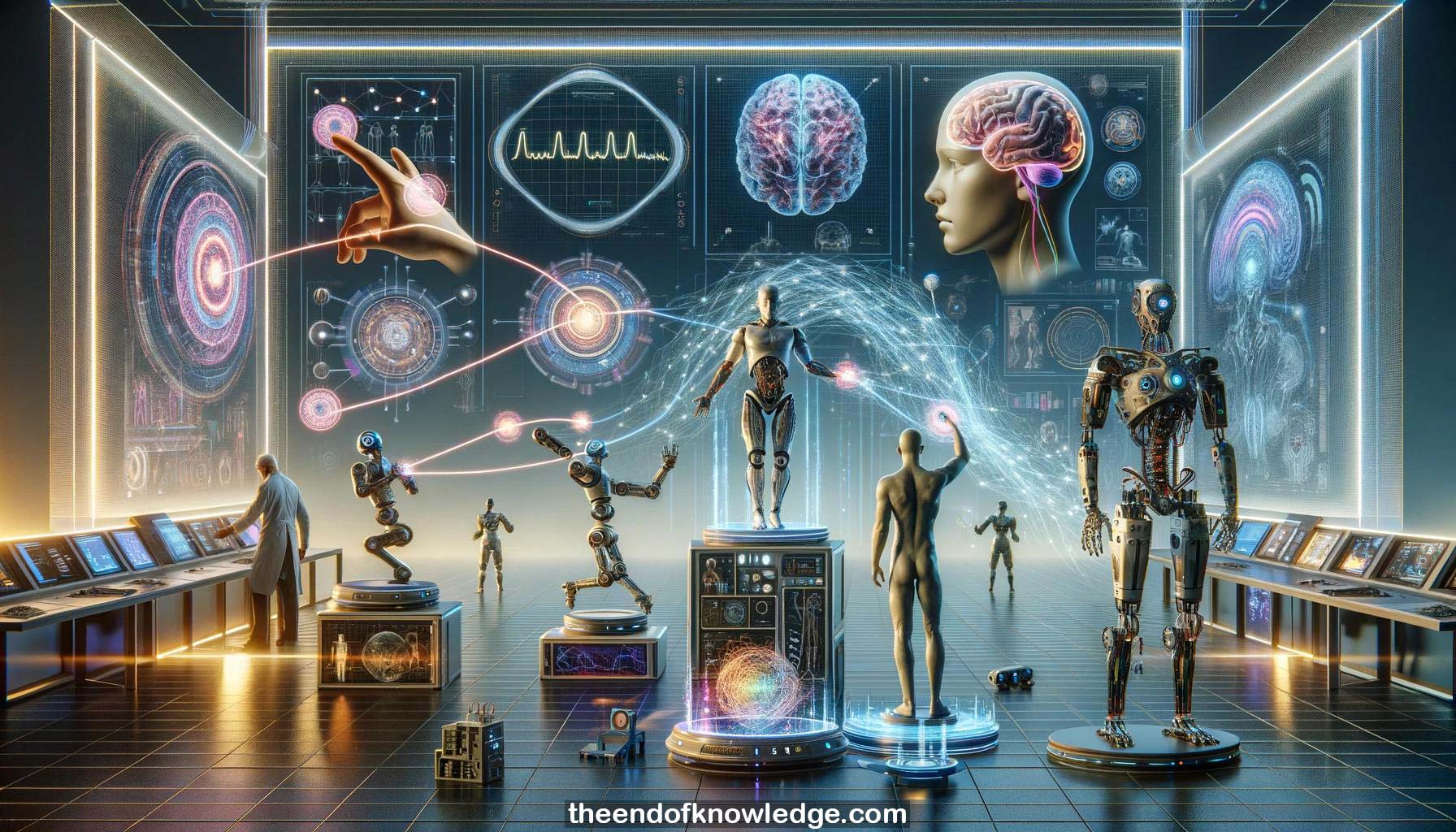 >
>
Concept Graph & Resume using Claude 3 Opus | Chat GPT4 | Llama 3:
Resume:
1.- Presenter Ramana Kumar Vinjamuri discusses synergy-based brain-machine interfaces from a human-robot interaction perspective.
2.- Goal is understanding how the intelligent human brain controls the dexterous human hand and processes multi-input, multi-output sensory information.
3.- Two approaches: top-down understanding neural representations of hand movements and bottom-up understanding control mechanisms of hand movements.
4.- Applications are improving impaired motor control, augmenting motor control, improving motor rehabilitation post-stroke, and accelerating new motor skill learning.
5.- Central topic is synergies - building blocks/alphabet of movement shared across movements. Combining synergies enables performing many movements.
6.- First part focuses on dimensionality reduction in control of hand movements, going from behavior to brain.
7.- Synergies are extracted from hand kinematics using dimensionality reduction methods like PCA. Weights optimally combine synergies to reconstruct movements.
8.- Linear methods efficiently capture global movement patterns. Data fusion of kinematics and muscle activity improves synergy representation and movement reconstruction.
9.- Dynamical synergies from contact forces and pressures inform about population activation and pressure points during grasps.
10.- Second part is on neural representations of synergy-based hand movements using non-invasive methods, going from brain to behavior.
11.- Simplified synergy combination model used with EEG to decode synergy-based hand movements. Spectral EEG features enable 90%+ movement reconstruction accuracy.
12.- Work being extended to individuals with paralysis. Differences in EEG expected compared to healthy subjects.
13.- Motor imagery being explored to control movements decoded from models trained on motor execution EEG features. Encouraging preliminary results.
14.- Third part covers applications of synergies in technologies like exoskeletons, assistive devices, humanoid robot interaction, and motor learning.
15.- HEXO is a synergy-embedded 10DOF hand exoskeleton with low-dimensional control of a high-dimensional system. EMG sensors control functional synergies.
16.- Synergy-based training hypothesized to enable better transference to new tasks compared to task-based training. Preliminary results support this.
17.- Synergy-based arm exoskeletons being developed in India for affordable stroke rehab. Moving beyond 2D to 3D control using arm synergies.
18.- Immersive VR environment being created to train people to learn hand movement "alphabets" or synergies to achieve more dexterous control.
19.- Biomimetic learning aims to teach robots new movements through synergy-based approaches rather than only imitation learning for expanded capabilities.
20.- Emotion recognition for human-robot interaction being improved by fusing facial expressions with neurophysiological signals like EEG for higher accuracy.
21.- Wearable integrated systems using EEG/EDA being developed to detect stress, a first symptom in many mental health disorders, and provide interventions.
22.- Future research includes modeling basal ganglia and cerebellum to find synergy representations for real-time control of assistive robotics and transference in motor learning.
23.- NSF industry-university cooperative research center BRAIN launched at UMBC to work with neurotech companies to accelerate technologies to market.
24.- Mentors, collaborators and especially students across many institutions acknowledged for enabling the impactful research.
25.- Tremendous growth expected at intersection of brain and robotics in next 5-10 years. AI/ML, AR/VR, neurotech identified as key themes.
26.- Transformative potential of non-invasive BCI anticipated as computing power increases. But important ethical concerns exist around privacy, autonomy, equity, etc.
27.- Studies so far in lab settings, but deep learning expected to help handle real-world noise in non-invasive BCI deployed in unconstrained environments.
28.- Spring school reached an astounding average of 68,900 people per day across multiple simultaneous live streams around the world.
29.- Engaging Q&A followed the presentation touching on opportunities at UMBC, collaborations, advances in the field, transference, ethical issues, and practical challenges.
30.- Highly impressive and impactful research and an excellent presentation much appreciated by the audience. Further discussions and collaborations anticipated.
Knowledge Vault built byDavid Vivancos 2024